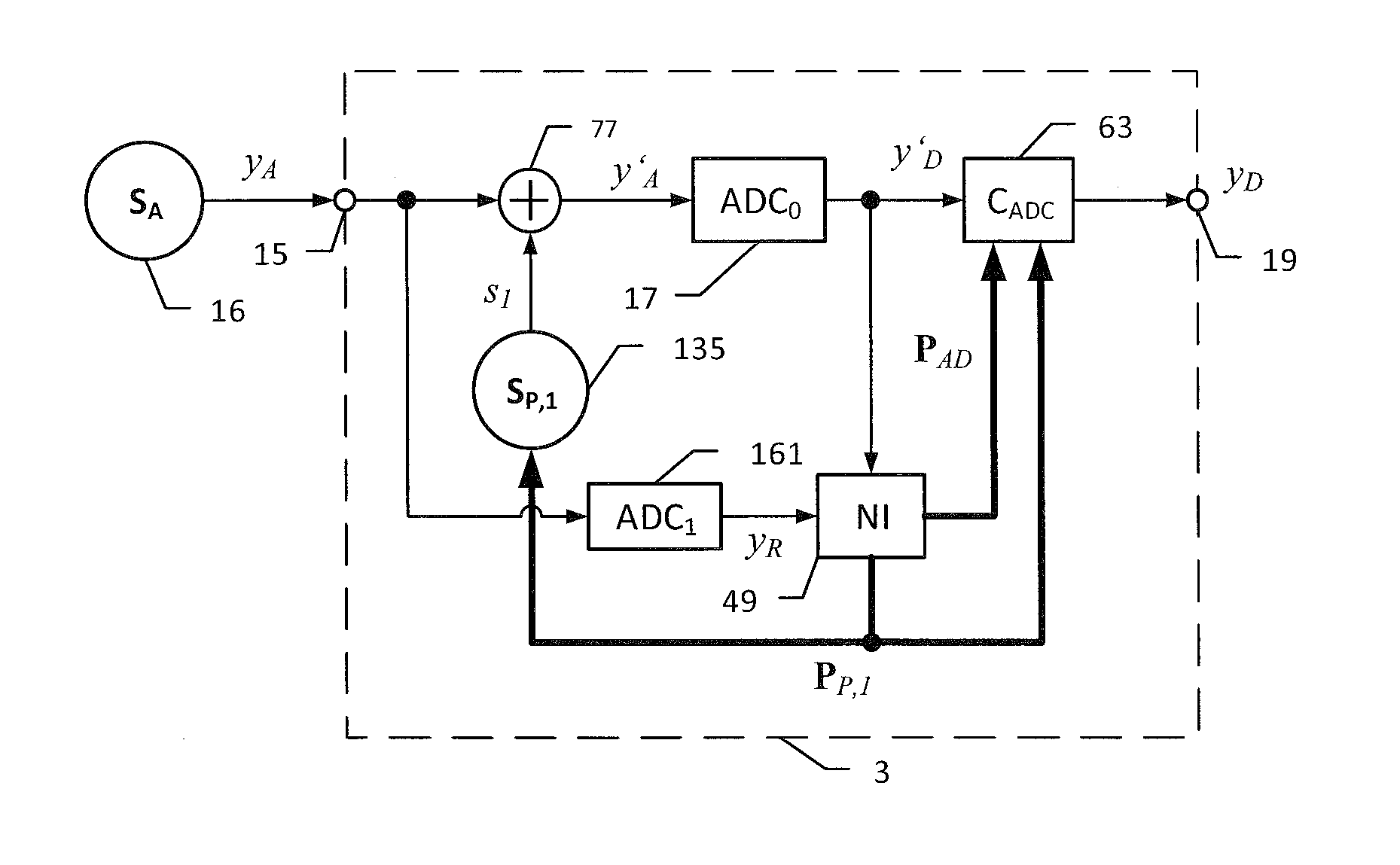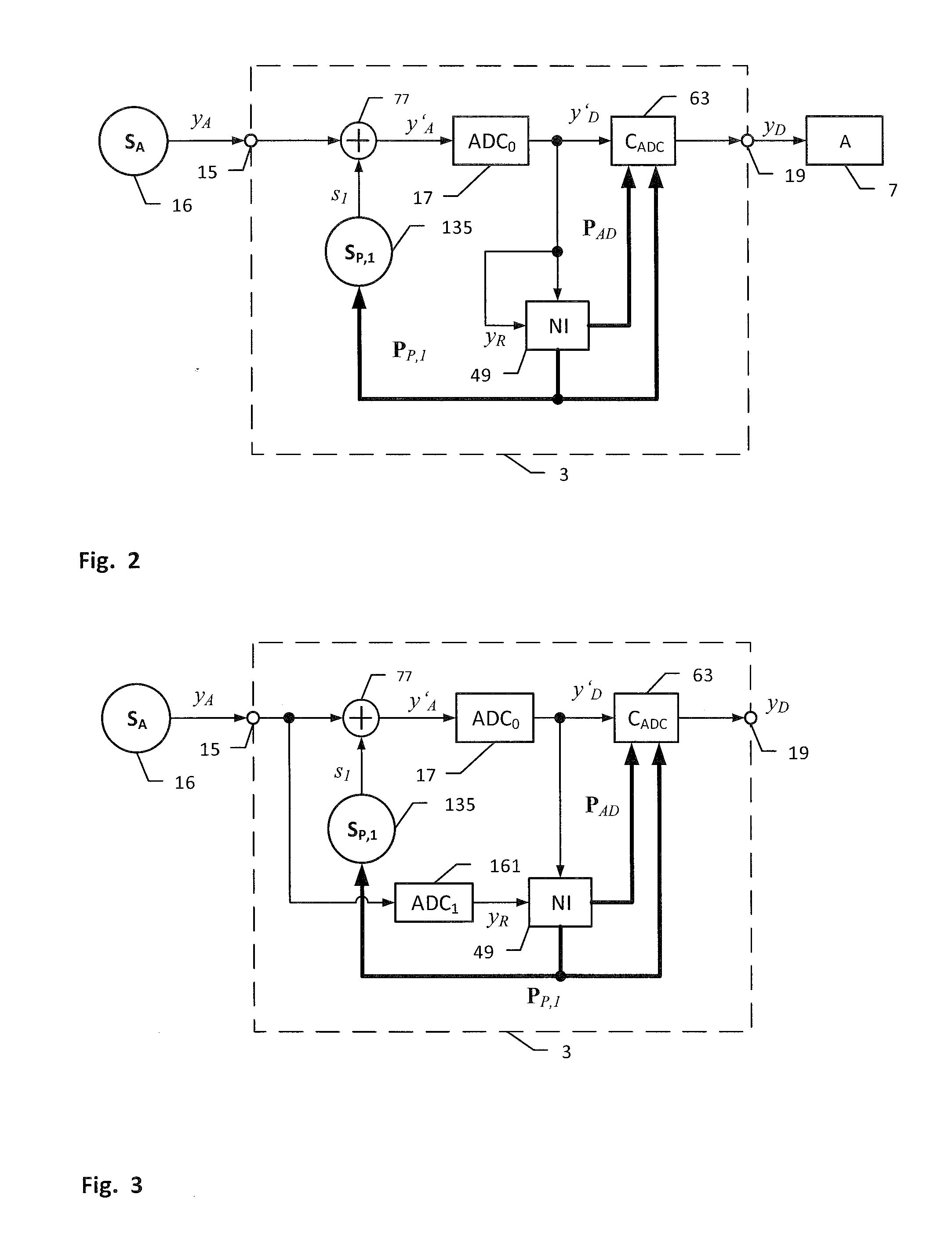Converter arrangement and method for converting an analogue input signal into a digital output signal
a converter arrangement and digital output technology, applied in the field of converter arrangement and method for converting an analogue input signal into a digital output signal, can solve the problem of not having the required prior knowledge of the physical cause of the distortion generated in the signal, and achieve the effect of improving the robustness of the overall system, simplifying and speeding up the identification process
- Summary
- Abstract
- Description
- Claims
- Application Information
AI Technical Summary
Benefits of technology
Problems solved by technology
Method used
Image
Examples
Embodiment Construction
[0030]FIG. 1 shows a model of the ADC 17, that contains a linear element 25 with the transfer function HAD(s) and a nonlinear element 27, whose inputs are supplied with the analog input signal yA. Their output signals are summed up by adder 35 generating the digital output signal
yD=lAD+nAD. (1)
The linear signal can be expressed as
lAD=L−1{HAD(s)}*yA (2)
using the convolution operation *, the Laplace operator s and the inverse Laplace transform L−1{ }. The nonlinear distortion signal
nAD(t)=∑k=2K∫…∫hADk(τ1,…,τk)yA(t-τ1)…yA(t-τ1)τ1…τk(3)
[0031]is expressed as a truncated Volterra series comprising kth-order homogeneous power systems with the kernel function hADk(τ1, . . . , τk).
[0032]FIG. 2 shows the arrangement for the linearization of the ADC 17 according to the invention using a generator 135, which generates a first perturbation signal s1 using digital control information PP,1. The perturbation signal s1 is incoherent to the analog input signal yA yielding a vanishing expectation va...
PUM
 Login to View More
Login to View More Abstract
Description
Claims
Application Information
 Login to View More
Login to View More - R&D
- Intellectual Property
- Life Sciences
- Materials
- Tech Scout
- Unparalleled Data Quality
- Higher Quality Content
- 60% Fewer Hallucinations
Browse by: Latest US Patents, China's latest patents, Technical Efficacy Thesaurus, Application Domain, Technology Topic, Popular Technical Reports.
© 2025 PatSnap. All rights reserved.Legal|Privacy policy|Modern Slavery Act Transparency Statement|Sitemap|About US| Contact US: help@patsnap.com



